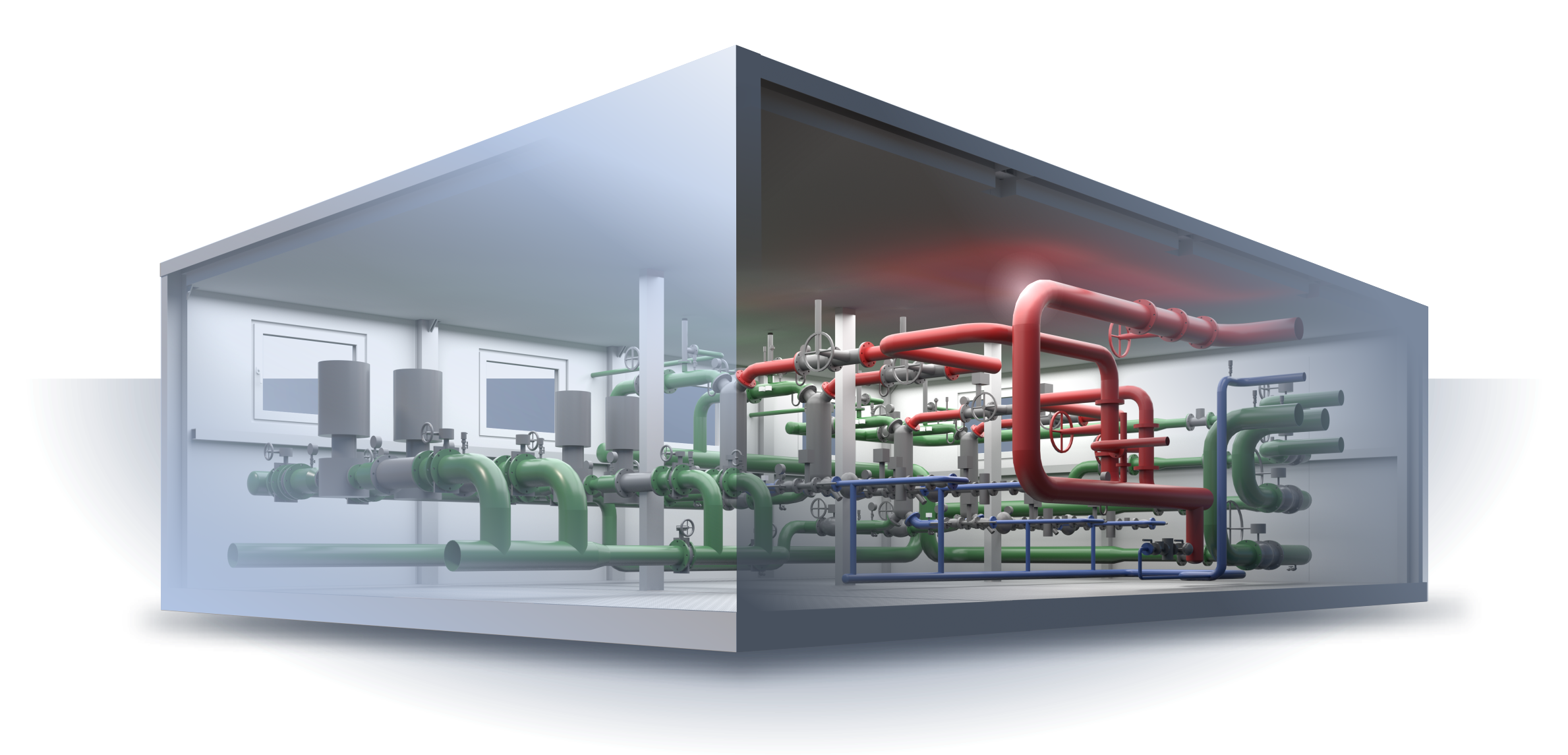Individual Heat Points
LET'S MAKE
OUR LIFE
COMFORTABLE
What is an individual heat point?
An individual heat point is a system containing heating plant components to ensure heat carrier distribution between heat consumers. Its parameters and metering functions are adjustable. The system is placed in a special technical room, and the heating units are connected to the heating network (central heating station, CHP or boiler house). ITP may provide heating, hot water supply and ventilation. ITP are most often placed in basements of apartment blocks. As for industrial sites, they are placed in free-standing engineering facilities.

What are the advantages of individual heat points?

The principle of operation of individual heat points
ITP operation principle depends on the heat carrier source. Usually, it is an independent boiler house or a thermal power plant.
Heat source is delivered to a heat point by the main heating network, the heat point is connected to the consumers by means of secondary distribution networks.
Having delivered its heat to the consumers (hot water system) the heat carrier returns to a heating supplier via a return line. There, it is fed and heated to a set temperature and flows again to a heat point through the main heating networks to be distributed to the consumers.
Heat carrier is delivered by means of circulation pumps.Pressure control valves protect the system from accidental pressure increase.
The temperature of the heat carrier to be supplied to consumers is set automatically in modern heat points: an operator of a heat point either sets the necessary values or selects IHP operation mode.
A heat metering unit is an obligatory component of any heat point. The heat metering point records the volume of consumed heat carrier.Thanks to the meter, the consumer pays for the resource it has actually consumed.
The principle of operation of individual heat points
ITP operation principle depends on the heat carrier source. Usually, it is an independent boiler house or a thermal power plant.
Heat source is delivered to a heat point by the main heating network, the heat point is connected to the consumers by means of secondary distribution networks.
Having delivered its heat to the consumers (hot water system) the heat carrier returns to a heating supplier via a return line. There, it is fed and heated to a set temperature and flows again to a heat point through the main heating networks to be distributed to the consumers.
Heat carrier is delivered by means of circulation pumps.Pressure control valves protect the system from accidental pressure increase.
The temperature of the heat carrier to be supplied to consumers is set automatically in modern heat points: an operator of a heat point either sets the necessary values or selects IHP operation mode.
A heat metering unit is an obligatory component of any heat point. The heat metering point records the volume of consumed heat carrier.Thanks to the meter, the consumer pays for the resource it has actually consumed.
Types of individual heat points

IHP
to serve a single building
It is designed for one residential house, administrative building, industrial site. When designing IHP, ready-made block heat points can be used.
CHP
central heat point
It is designed to provide heat and hot water to housing blocks, a group of buildings and large industrial companies. When building CHP, block heat points can be used
BHP
block heat point
A block heat point is a ready-to-work unit used for building IHT and CHP. The block heat point is delivered fully assembled and connected to the heating network by flanges. BHP makes it possible to significantly reduce design and installation costs for IHP or CHP and simplify the design of the heat point itself.
